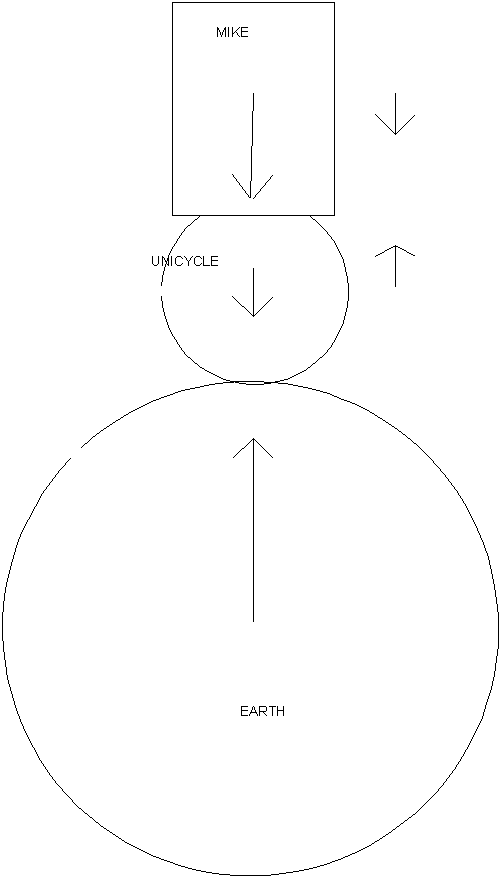![]()
Q's and A's
![]()
![]()
They occur on two different objects. Forces can only cancel out when the forces are acting on the same object.
![]()
A space ship can accelerate in space. It uses the principles of Newton's Third Law: The millions of particles (from the exhaust) that are spewing out of the space ship push the ship in a direction opposite to their movement. If more fuel is used up, more particles would be expelled, and so the ship would feel a larger force acting on it, since f=ma, and the mass of the ship is the same (assuming fuel mass is negligible), its acceleration must increase.
![]()
Recall that this was observed when showing the collision demonstration (section 1). Different accelerations are obtained when the objects have different masses.
![]()
Some what of a tricky question, they both experience the SAME force.
![]()
Because the bug's mass is much much smaller than the car's, it will experience a much greater change in acceleration than the car. This change in acceleration over a very small fraction of time is why the bug experiences a greater effect.
![]()
This can be observed by adding a lot of weight on only one cart.
![]()
Why must the forces in an interaction be equal and opposite (i.e. what would happen if they are not equal and opposite)?
If the forces in an interaction are not equal and opposite there would be total chaos!! Nothing would make sense, for example if I placed a sandwich on a table and the forces aren't equal and opposite the sandwich could 'shoot' into the air (assuming the table, somehow, is applying more force).
![]()
A 1000 kg truck at a red light starts in its way as soon as the light turns green. The driver doesn’t notice that the next red light is creeping up on him quick fast…because he was distracted by a cell call. Unfortunately he smashed into a little 400 kg Austin Mini stopped at the red light with a force of 5000 N. How far will the Mini travel in 4 seconds after the collision? (Assume the cars do not stick together and the road is frictionless after the point of collision)
F=ma, m=400 kg, F=5000 N, t=4 seconds also d=vt + at2/2 where d=distance, t=time and v=initial velocity (ie 0 m/s)
so:
5000=400a
a= 12.5 m/s2 , now plug into distance equation
d= 0(4) + 12.5(4)2/2
d= 100 m
![]()
Mike while riding a unicycle was able to balance himself still for a few seconds. Draw a free body diagram of all the forces acting on mike and the unicycle when he was still. (Hint: center of masses are involved)

Forces are felt from the center of mass. Mike and the unicycle push on the earth, at the same time the earth pushes back (with the same force). Also Mike pushes on the unicycle as the unicycle pushes back on him.